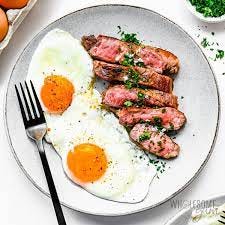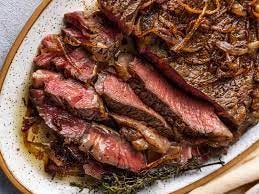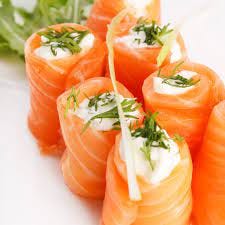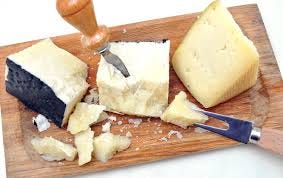Establishing Supporting Habits Part 3: Plating
Design a plate of healthy high-protein foods, sit down to eat without distractions, save carbage for the end of your meal, eat slowly, savor each bite, be thankful. Also, a recipe for homemade mayo.
This post is part of a series that seeks to build healthy habits on the foundation laid in The Three Week Challenge. Part 1 covered time restricted eating or TRE (not snacking), and part 2 covered the importance and how-to of bone broth.
Once we are intermittent fasting (IF), we are perfectly poised to begin implementing other healthy eating habits.
This is not a view of IF that everyone understands.
When I first heard a snippet about IF and tried it without doing any research, my biggest initial mistake was to think that fasting was an excuse to eat whatever I wanted in my eating window. My thought process was, “I fasted all day so now I get to eat all these Girl Scout Cookies that I wouldn’t normally eat.” As you can imagine, this method did not produce good results. Eating extra carbs made my fast extra hard the next day which meant that I was extra starving that afternoon when I broke my fast which meant that I ate even more carbs. It was a vicious cycle.
It’s hilarious that I didn’t read any books initially about IF because I thought the concept was too basic to need a book. “Why would I read a book about not eating?”
But, as it turns out, the concept is simple but the science is fascinating and complex. Once I began reading about IF and understanding the way the human body works, then everything changed for me. The right information gave me the motivation I needed to use IF as the first step to building other healthy habits. These habits in turn began to make my fasts much easier as my body could now get into fat-burning mode. Then I wasn’t as ravenous for carbs when it was time to eat.
The hard work of fasting can put us in a frame of mind where we want to eat the right foods so as to not undo all our hard work. That’s where supporting habits come in. Eating throughout the day fuels bad habits such as eating on the go and grabbing highly-processed snacks. But fasting creates true hunger as opposed to carb cravings. We are now in the perfect position to practice plating.
What is Plating?
Plating means planning exactly what you’ll eat and bringing it all to the table before you start eating. Then eat slowly, focusing on each bite, and eat without any distractions. No checking email, watching TV, or even reading a physical book. Ideally, use this time to converse with loved ones. Especially avoid working on the computer while eating.
After you sit down to eat, you only eat what you planned out. No getting up and grabbing extra food.
Everything doesn’t necessarily need to be on one plate but it needs to be at the table.
This concept helps you to take advantage of the genuine hunger you feel when fasting to make better choices.
Here’s an example of a plated lunch I often have.
I take some gorgeous, soft-boiled, local, pasture-raised eggs with dark orange yolks. (Pasture-raised egg yolks are possibly the most nutrient-dense food besides liver, and all of the nutrients are bioavailable unlike in plant foods where anti-nutrients such as phytic acid greatly reduce absorbability. Pictured: a Scotch Egg).
Now I slice some delish leftover steak.
Next, I roll up some smoked salmon spread with cream cheese. (Whenever I go to the grocery store hungry now, I come home with smoked salmon. It’s my go-to impulse buy.)
I might even slice a favorite hard cheese. I may add a side bowl of cottage cheese.
Now that is what I call feasting well! I don’t call myself keto or carnivore, I’m just trying to get the most nourishing food I can. (I do also eat liver once a week. I hope that 17 people didn’t just unsubscribe at the mention of liver. 🤣 I didn’t say you have to eat it. Although I think you should.)
The one struggle I run into with plating is that I often plate quite a bit more food than I can eat. But remember that we are not on a calorie-restricted diet. Therefore, I plate myself a generous amount of food and then I listen to my appetite about when to stop.
For family-style meals, simply have all the dishes on the table before you sit down. Then, before you start eating, have everything dished up on your plate. Make sure to serve yourself an extra large serving of protein with an animal fat such as butter, cheese, or sour cream on it and to eat that first.
Whenever possible, avoid eating in the car, at sports games, while standing over the sink, while walking out the door, walking around the mall or any other on-the-go situation. This is a general principle to strive for in everyday life but there will be exceptions.
Why Plating is Important
We all have a strong psychological need to obtain comfort, satisfaction, and pleasure from food. If we mindlessly shovel food into our faces while reading through a stressful work email, we’ve just missed an important opportunity to delight in food.
While we were thinking about work, some of the pleasure that comes from slowing down and enjoying each bite of delectable food was lost on us. When we don’t take time to enjoy our food in this way, we may find that an hour after eating, we’re seeking to eat again because although we received the nutrients we needed, we didn’t fully experience the pleasure of food.
This can lead to looking for something sweet later for a quick dopamine rush. But the slow, mindful enjoyment of nourishing foods leaves us satisfied in a different way. The dopamine rush leads to a crash causing us to seek out another hit. The contentedness that comes from slowing down and mindfully enjoying truly nourishing foods leaves us satisfied for hours.
Take the time to go around your plate and take one bite of egg, then another of steak, then one nibble of pungent cheese, and one bite of salmon. Chew slowly. Relish each unique flavor. Then take a swig of that warm mug of salty, homemade bone broth.
The hungrier you are when you sit down, the slower you need to eat.
If possible, eat outside. Get sunshine. Look at the sky and notice how the trees are changing colors. Be present in this beautiful world while you eat. Engage in pleasant conversation at the table.
Remember, we are humans, not animals, so social factors impact digestion. Being calm, smiling at loved ones, being thankful, being outdoors—all these practices cause our stomachs to produce enzymes that aid in digestion. Being stressed, rushing, chewing quickly—all those things affect how food is assimilated into our bodies.
How Plating Helps You Make Better Food Choices
You can use plating as a strategy to help you ditch your craving for carbage.
It works like this. Let’s say you’re standing in a checkout line and you see some Little Debbie monstrosity—your one guilty pleasure, or so you tell yourself.
Whether or not you’re in your eating window, you need to have a conversation with yourself that goes like this:
“Self, you may have that Little Debbie monstrosity, despite the fact that it’s filled with seed oils, high fructose corn syrup, 23 other ingredients that you can’t pronounce and that buying it supports the globalist elitists who own both the mega-food corporations that make us obese and the big pharma companies that then supply all the drugs after we’re diabetic and dependent on meds for life. But it’s fine. You can still eat it. BUT you have to eat it as part of a meal. And it has to be at the end of the meal after you’ve consumed foods containing the essential nutrients that your body actually needs such as protein and healthy fats (carbs are completely unessential.)”
So then you buy the thing. You wait for an actual meal to eat it.
At your next meal, you eat the protein-rich food first. Then you take a long, hard look at that Little Debbie monstrosity. You think about it. Do you really feel like eating it now?
It’s okay to eat it. But think about how it tastes. Do you love it like you used to? Is it really speaking to you in the same way it does when you shove it in your face while crossing three lanes of traffic and talking on the phone? Perhaps the real reason you grew to love it is that you were always eating it between meals. How does it taste after you’ve been satisfied with real nutrients?
When I’ve gone through such exercises myself, I’ve determined that I never want to buy one of those chemical-ridden, pharma-customer-making, crack cakes again. You’ve entered a new phase when you find that you’re eating the right thing because you want to.
People asked me why I took such a hard stand in the three-week challenge about cutting out all zero-cal sweeteners both in and out of the eating window but I didn’t forbid all sugar. It’s a fair question.
There are some things that I want you to make total war on. Stevia is “natural” but also a plant toxin whose effects are not yet completely known.
But I have a different philosophy of sugar. I want you to taper off it because you desire less of it. You know you are reducing something the best way when you no longer think obsessively about the thing you are giving up. Are you constantly thinking about how you can never have such and such sweet junk treat carbage anymore? Maybe you need to eat one after having a really satisfying meal to prove to yourself that it’s not as good as you thought. DON’T open your eating window with it.
That said, some people do really well going cold turkey on sugar and carbage and don’t miss it. If that’s you, keep at it, of course. But other people do well making those lifestyle changes gradually.
Think of Supporting Habits as Goals to Strive for and Not Hard and Fast Rules
Some people just want to eat their own way and be left alone. They think that what they don’t know won’t hurt them.
But there’s another way of looking at life besides “ignorance is bliss.” And that is: “information is motivation.”
For example, I am thankful that I have the information about how harmful seed oils are to my body so I can make informed decisions. Now that I know the truth, does that mean I will never eat another drop of seed oils? No. My husband and I ate at a restaurant last week. Afterward, we said our customary phrases, “I feel like crap” and “remind me not to do that again for a while.” But at least we know why we feel bad.
People get overwhelmed with knowledge about eating when they assume their only two choices are never giving a thought to what they put in their mouths or else being freakishly consistent to the point of showing up at someone’s house for dinner and refusing to eat their food if cooked in seed oils. (I might be weird but I would never dream of doing that.)
But life doesn’t give us only two options. We have hundreds of choices every day. Knowledge helps us to navigate those choices as best we can.
Knowing what the ideal is simply allows you to work towards it as best you’re able.
Knowing that plating is a good way to eat simply gives you a goal to work toward.
The Nuances of TRE and Plating
A friend asked recently about sipping a creamy coffee in her eating window but between meals. I’m so glad she asked this question because it’s such a great opportunity to introduce nuance.
For context, she’s a champ who does black coffee in the morning when she’s fasting. But after she breaks her fast, she wants a creamy coffee. I get it.
My response was that my main goal in advocating TRE is to keep people from snacking all afternoon. However, one creamy coffee in the afternoon is not that big of a deal especially when it doesn’t have sugar that spikes insulin and cravings. Go ahead and enjoy it if you want. It’s not technically in line with plating or TRE to do so. But it’s only ONE cup of coffee with cream.
However, if you get to a weight loss stall, it’s something you could consider cutting back on especially if one creamy coffee bleeds into 2-3 coffee and then creamy coffee from 2 -4 every afternoon.
Having the knowledge that eating between meals isn’t ideal simply allows one to evaluate one’s choices.
If looking forward to the creamy coffee in the afternoon is what makes you able to power through the black coffee in the morning, then keep doing it. If creamy coffee in the afternoon is what makes IF enjoyable, then keep having it. If it’s a huge victory that you’re now only doing cream in your eating window and no longer sugary coffee, then celebrate that. If you used to eat bags of Cheetos and Oreos from 1 to 5 every afternoon and you swapped that habit out for one creamy coffee, I’m gonna let that coffee slide for now. I like to meet people where they are.
If you sit there at 4 pm sipping your creamy coffee and thinking, “IF is the life. I fasted until 1, then I had a low-carb meal, plus I took a walk this morning, and I clean fasted, and I have more energy than ever, and my inflammation is down, and I even get to have this special coffee with cream in the afternoon and still lose weight,” then I’m right there with you cheering you on for all those victories.
I’m not standing in the shadows shaking my head saying, “But you didn’t do TRE and plating exactly.”
Just do the best you can with these suggestions. I’m giving you tools and concepts to practice as you see fit. Keep striving and don’t stress. If you get to a weight loss stall, now you know that getting stricter with plating and TRE might help.
I always hope to communicate the spirit of the law rather than the letter of the law. I’m giving you challenges to strive for. There are some things that I’m super insistent about like the clean fast since it’s so foundational. But the supporting habits are just things to keep in mind. They are things that we try to do on most days. They are goals that we work toward, and we pay attention to how practicing them helps and not practicing them can sometimes derail us.
I challenge you to try plating and TRE and see what changes you notice.
So fast well and feast well,
Leslie
[Correction from last week. I wrote that collagen is the most common type of protein. What I meant to type was that collagen is the most common type of protein found in the human body. I just temporarily blanked somehow. It’s changed on the web version of the post but it was emailed to everyone wrong.]
Homemade Mayonnaise
Makes approximately 1 cup
1 large egg at room temperature
1 tablespoon red or white wine vinegar
1/4 teaspoon kosher salt, or more to taste
1 cup avocado oil
1 teaspoon fresh lemon juice
1 teaspoon Dijon mustard, optional (will make mayo slightly spicy)
Add egg, vinegar, salt, lemon juice, and mustard to the small bowl of a food processor or blender and process for 20 seconds. Scrape the sides and bottom of the bowl, turn the food processor on then begin to slowly add the oil in tiny drops until about a quarter of the oil has been added (this is critical for proper emulsification).
Once you notice that the mixture is beginning to thicken and emulsify, you can add the oil a little quicker. With the processor on, continue to add it slowly, but increase to a very thin stream instead of drops of oil.
When all of the oil has been added, scrape the bottom and sides of the bowl and process for an extra 10 seconds. Taste mayonnaise for seasoning then add salt, lemon juice, or extra vinegar to taste. Note, if the mayo seems too thin, slowly stream in more oil with the processor running until thick.
To make an aioli for use on burgers, salmon, sandwiches, or to mix with tuna or chicken for salad, simply add garlic and or fresh herbs. For a southwest aioli, add chili powder. For a ranch salad dressing add fresh chives and parsley plus a little milk buttermilk at the end to thin it.
[This newsletter is for informational purposes only and is not designed as a substitute for medical advice. Talk to your doctor before beginning any dietary changes, especially if you are on medications for diabetes. Fasting while taking certain medications such as Metformin and especially insulin can lead to dangerously low blood sugars. If your doctor does not support fasting, search for a physician who will support your fasting journey. Fasting is not recommended for those pregnant, breastfeeding, or for children and teens still growing and developing. For those with diabetes, personal fasting coaches are available through TheFastingMethod.com. I receive no compensation or ad revenue for anything in this newsletter including links to books, videos, websites, coaching services, podcasts, or supplements.]












I did not realize when I first started IF that there would be joy and healing down the line. All I heard was fast in order to eat all the things. IF eventually taught me to find pleasure in feasting on real foods and flavors. The commercial junk is far less enticing. I love the plating approach, really seeing the food, tasting each element, and savoring both the food and the rest of meal times. It's a skill I missed out on.
Leslie- Do you do coaching?